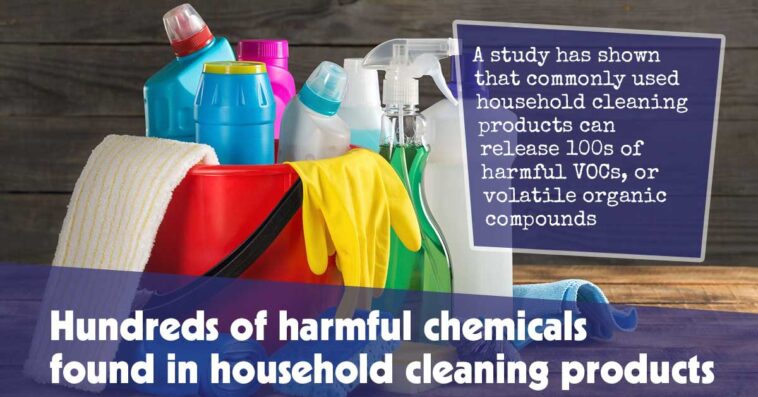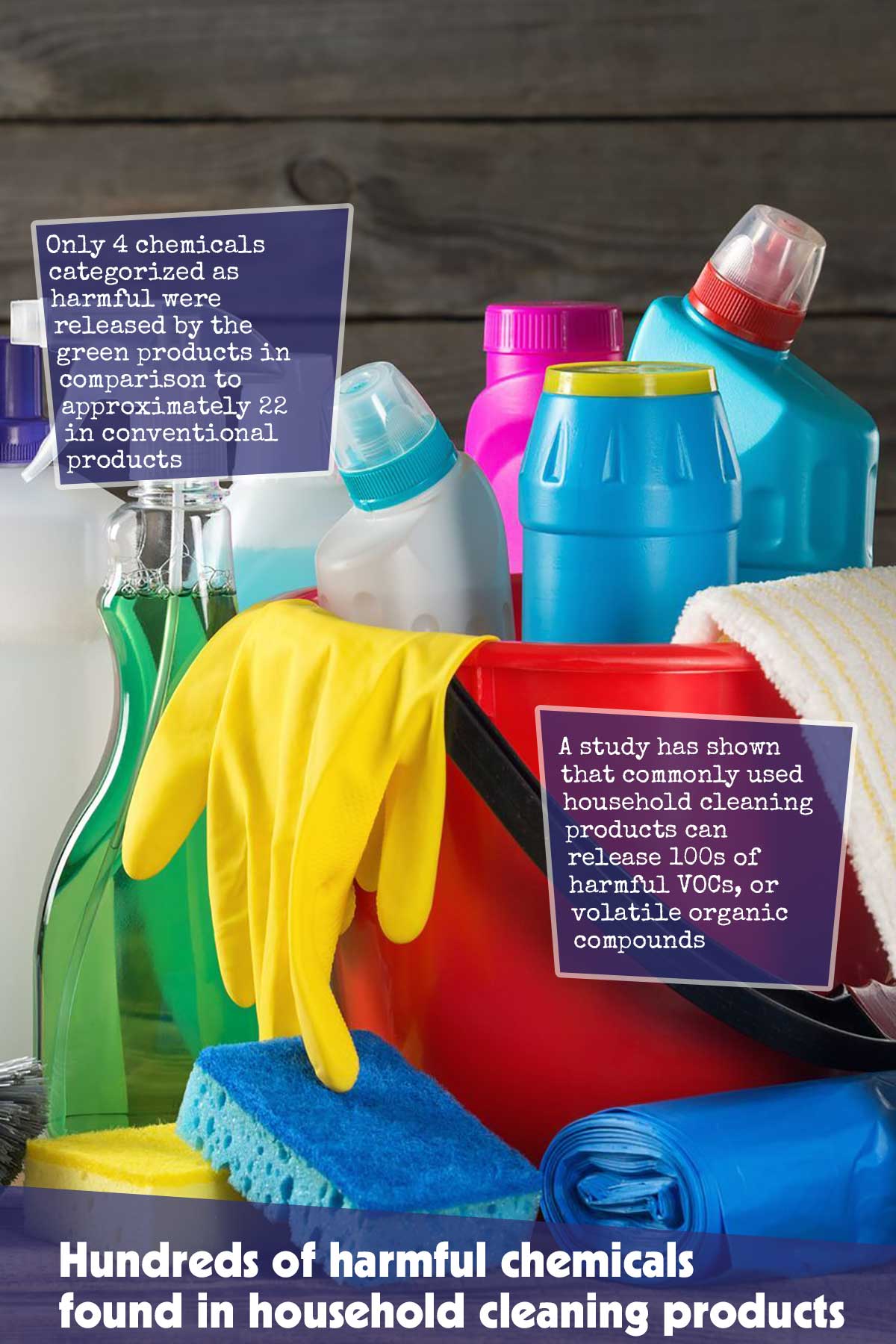A study has shown that commonly used household cleaning products can release 100s of harmful VOCs, or volatile organic compounds.1✅ JOURNAL REFERENCE
DOI: 10.1016/j.chemosphere.2023.139570
The study assessed 30 cleaning products, such as air fresheners, glass cleaners, and multipurpose cleaners.
Researchers analyzed conventional products as well as green cleaning products and a total of 530 VOCs were detected in the 30 products tested.
It was found that 193 of these VOCs were harmful, defined as being potentially harmful to health, which includes increased cancer risk, respiratory system damage, and reproductive and developmental health risks.
Cleaning product VOCs impact the air quality indoors as well as outdoors. They however contaminate indoor air 2 to 5 times, with some estimates as much as 10 times more than outdoor air. Certain products give off VOCs for days, weeks, and even months.
The results highlight a way to minimize exposure to harmful VOCs, by choosing ‘green’ products particularly products that are ‘green’ as well as fragrance-free.
The study determined that products labeled green released fewer VOCs, in comparison to conventional products, approximately half the number.
The green products classified as fragrance-free also produced the least VOC emissions, almost 8 times less than conventional and 4 times less than fragrance-containing green products.
This was also observed for the amount of VOCs regarded as harmful in the products. Only 4 chemicals categorized as harmful were released by the green products in comparison to approximately 15 in fragrance-containing green products and 22 for conventional products.
This indicates that opting for green, or even fragrance-free green cleaning products could be the sensible choice for individuals concerned about indoor quality of air and possible health risks.
VOCs’ health harms are particularly concerning due to the amount of Individuals who could be experiencing workplace exposure.
Research indicates that cleaning industry workers have a 43% greater chronic obstructive pulmonary disease risk and a 50% greater asthma risk.
Women who work in the cleaning industry also face a greater lung cancer risk.
The health of children could also be at risk. Other research has shown that an increased use of some indoor cleaners while pregnant and in infancy is linked to a higher risk of wheezing and asthma in childhood.
The results of the study are consequential for environmental health as well as human health. Consumer product-emitted VOCs can play a role in outdoor air pollution, contributing to current environmental concerns.
A 2018 study determined that 50% of the VOCs responsible for air pollution originate from consumer products.
Choosing green cleaning products is a simple method for reducing harmful chemical exposure. This could be particularly important for the health of women and children.




